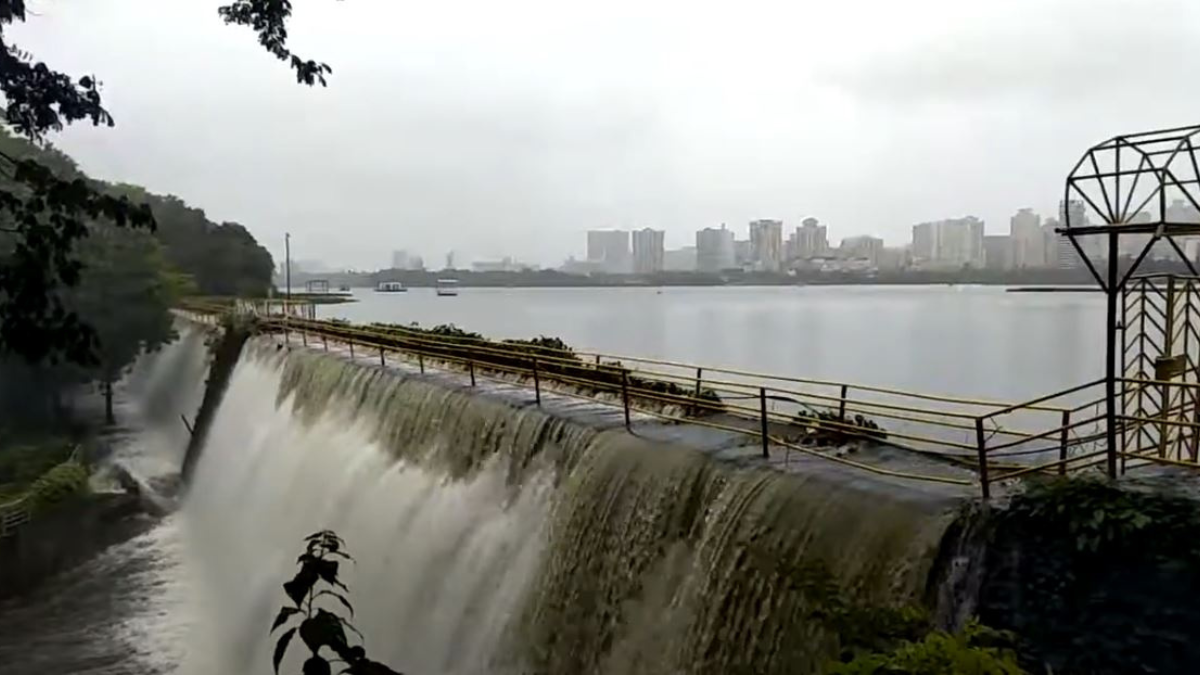On June 18, 2025, Mumbai grappled with severe weather conditions as Powai Lake began overflowing following relentless rainfall in its catchment areas.The ensuing waterlogging led to significant disruptions in both air and rail traffic highlighting the city’s vulnerability to monsoon-induced challenges.
Powai Lake: Overflowing Amidst Unprecedented Rainfall
Powai Lake, an artificial reservoir constructed in 1890, serves as a crucial water source for Mumbai. With a storage capacity of 545 crore liters,the lake primarily caters to industrial needs and is not fit for human consumption . However, following intense rainfall over the past few days, the lake reached its capacity and began overflowing on June 18, 2025.
The overflow of Powai Lake is a rare occurrence, typically happening during the peak of the monsoon season.
This year’s early overflow underscores the severity of the current weather patterns and the challenges posed by climate change.
Rail Traffic Disruptions: Waterlogged Tracks and Delays
The heavy rains led to significant waterlogging in various parts of Mumbai, affecting local train services. Notably, the Central Railway services between Dadar and Matunga stations experienced delays due to water accumulation on the tracks. Waterlogging near Mankhurd, Panvel, and Kurla stations further compounded the situation, leading to delays of 15 to 20 minutes on the Harbour Line .In response to these challenges, the Western Railway implemented high-capacity pumps at vulnerable locations to ensure the continuity of train services. Despite these efforts, commuters reported delays, highlighting the strain on the city’s rail infrastructure during adverse weather conditions .
Air Traffic Chaos: Flight Cancellations and Diversions
Mumbai’s Chhatrapati Shivaji Maharaj International Airport faced operational challenges as heavy rains led to waterlogging on runways.This resulted in the suspension of runway operations twice during the day, leading to the cancellation of 36 flights and the diversion of 15 others,including those operated by Air India, IndiGo, and Akasa .The airport authorities also had to suspend runway operations twice during the day due to waterlogging, leading to significant delays and inconvenience for passengers. These disruptions underscore the vulnerability of airport operations to extreme weather events and the need for robust infrastructure to mitigate such impacts.
Ground-Level Impacts: Waterlogged Streets and Traffic Jams
Beyond the rail and air traffic disruptions, Mumbai’s roadways also bore the brunt of the heavy rains. Areas such as Hindmata, Wadala, and Matunga experienced severe waterlogging, leading to traffic jams and stranded vehicles. The Andheri, Khar, and Maharashtra Nagar subways were closed due to flooding, forcing traffic diversions and exacerbating congestion .The Brihanmumbai Municipal Corporation (BMC) deployed pumps to clear water from affected areas, but the persistent rainfall continued to challenge their efforts. Commuters faced extended travel times, and daily routines were disrupted as the city struggled to cope with the deluge.
IMD’s Yellow Alert: No Respite in Sight
The India Meteorological Department (IMD) issued a yellow alert for Mumbai on June 18, 2025, forecasting continued heavy rainfall throughout the day.The alert warned of potential waterlogging and further traffic disruptions, advising residents to exercise caution and stay updated on weather conditions .Given the forecasted conditions, authorities have heightened preparedness measures, including the deployment of additional pumps and the monitoring of critical infrastructure. However, the ongoing nature of the rainfall poses challenges to these efforts.
Looking Ahead: Infrastructure Resilience and Urban Planning
The recent events serve as a stark reminder of the vulnerabilities inherent in Mumbai’s infrastructure.
While the city has made strides in improving its drainage systems and flood management strategies, the increasing frequency and intensity of rainfall events necessitate a reevaluation of urban planning and infrastructure resilience. Experts advocate for the development of integrated flood management systems, the enhancement of stormwater drainage capacities, and the adoption of climate-resilient infrastructure to mitigate the impacts of such extreme weather events. Additionally, public awareness campaigns and community engagement are crucial in building resilience at the grassroots level.
Conclusion
Mumbai’s experience on June 18, 2025, underscores the pressing need for comprehensive urban planning and infrastructure development to address the challenges posed by climate change and extreme weather events. As the city continues to grow, it is imperative to invest in resilient infrastructure and adopt sustainable practices to ensure the safety and well-being of its residents.
Also Read : https://crazynews247.com/air-india-flight-ai-143-a-closer-look-at-the-recent-delhi-paris-cancellation/
